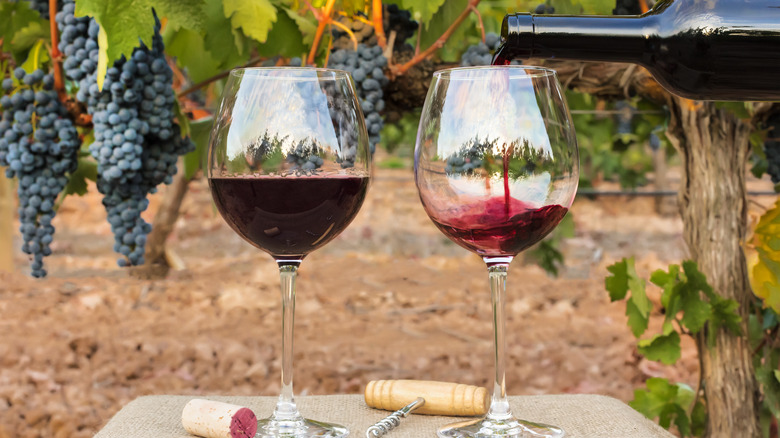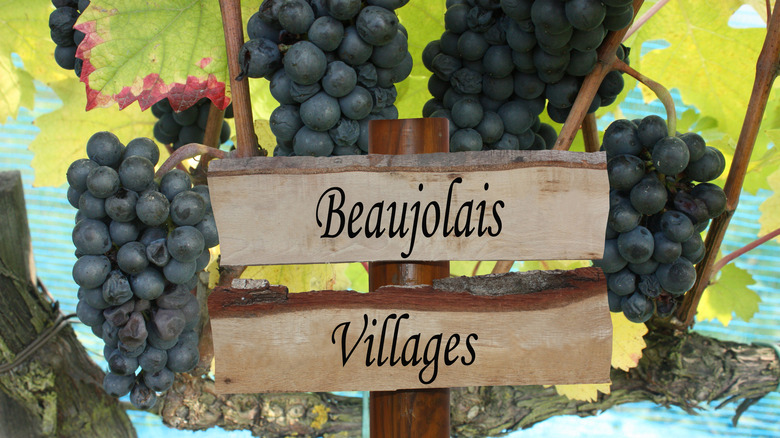What To Expect From Beaujolais Wine
Fancy a chic French wine? Then look no further than Beaujolais. Although Flatiron Wines & Spirits reports that a fraction of crisp and citrusy Beaujolais Blanc exists, the region specializes mainly in red wines produced with the purple-skinned Gamay grape. But while the berry might be behind many glou-glou (read: easy-drinking) wines, various renditions from Beaujolais can actually be quite complex. Unveiling some of the mystery shrouded in this appellation, consider this your cheat sheet on what to expect from the vins of Beaujolais.
A southern extension of Burgundy, Beaujolais came to be after Gamay was banished by Burgundy's Duke in the late 14th century over suspicions of its incredible yields and short ripening season, explains Little Wine. Thriving in the area's stony soils, Beaujolais was soon diffused throughout the region. That said, preserving tradition and terroir, certain designations now exist that illustrate the range of Beaujolais that's currently produced in France.
Categorized in four ways, Wine Folly explains that Beaujolais AOC (Appellation d'Origine Contrôlée) represents the most basic wines made anywhere in the region (but, namely south), whereas Beaujolais Villages AOC must only be produced in the approved 38 villages within the region, and Beaujolais Cru within the region's 10 most noteworthy areas, also adhering to stricter winemaking criteria. There's also Beaujolais Nouveau, which Wine Spectator explains is a distinction that describes the new vintages released on the third Thursday of every November.
The flavor profile is fresh and fruity with mild earthiness
Dry with high acidity, most Beaujolais can be described as light-bodied with soft tannins and prominent red fruit flavors of pomegranates, berries, and cherries, but Wine Folly notes that floral or earthy nuances of potting soil and forest floor can also be typical. That said, showcasing the most vibrantly fresh and fruity iterations of this appellation are Beaujolais AOC and Beaujolais Nouveau. However, SommTV shares that juicy Nouveau styles usually have an aroma of candied bananas thanks to carbonic maceration processes.
In contrast, VinePair explains that Beaujolais Villages tend to be more structured, displaying pronounced aromas and flavors of ripe red and black fruits. However, the most expressive wines of the region fall under Beaujolais Cru. While each of the 10 crus has a unique profile, Wine Spectator shares that at this distinction, it's common for wines to possess greater richness and complexity, showcasing accents of earth, smoke, spice, and florals depending on where the wine is made. Likewise, Wine Enthusiast notes that wines in this appellation are more likely to be made in a Burgundian style and even potentially oak-aged, factors which can add to overall age-ability.
Despite the fact that Beaujolais may differ depending on appellation, its characteristics of fruit, acid, and low tannin make it an extremely versatile wine for any occasion — simply give it a quick chill and pour yourself a glass to taste for yourself!

